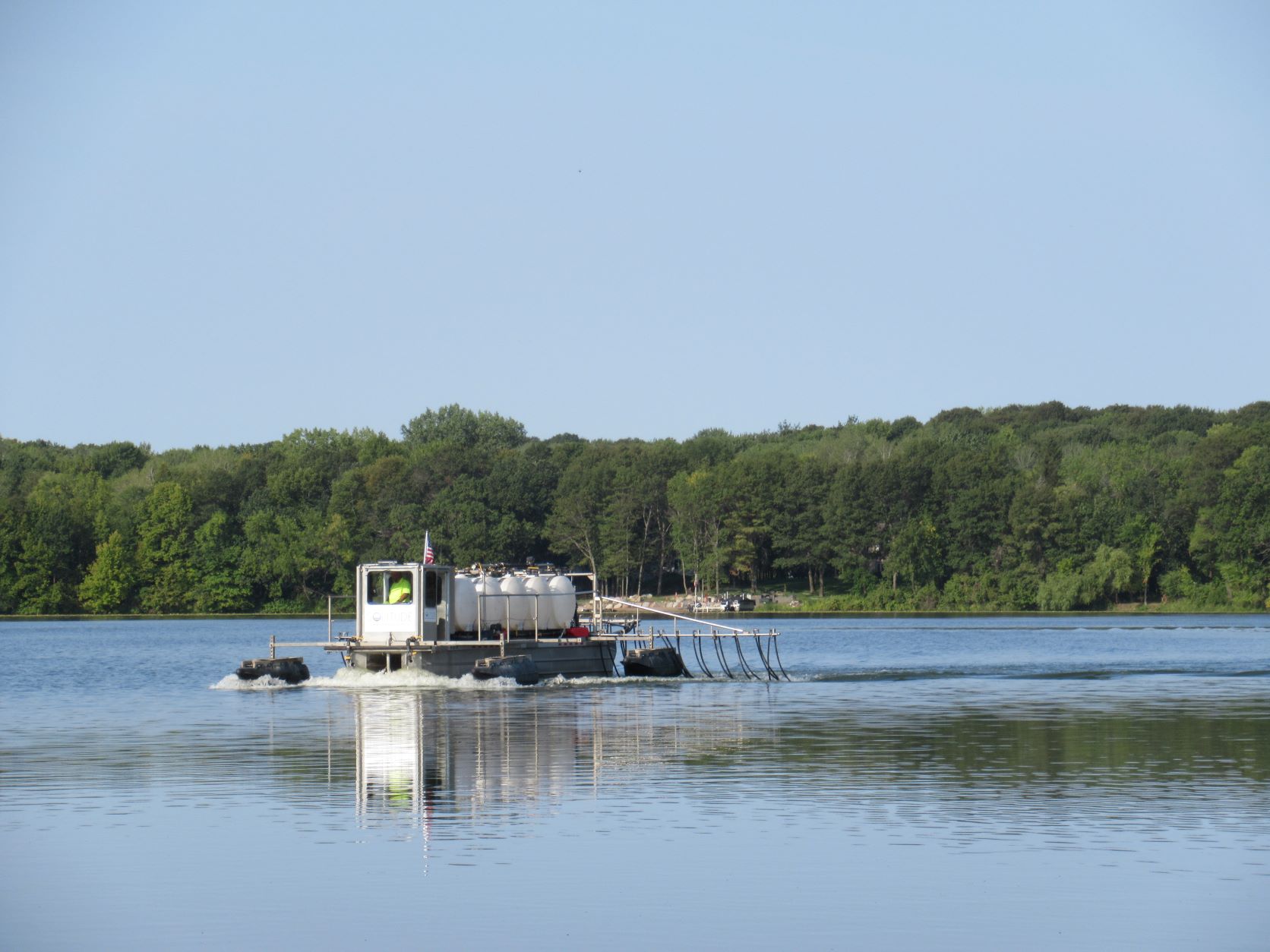What to Expect After Blue Lake Alum Treatment
Blue Lake received its first alum treatment on September 14th to address high phosphorus levels in the lake and protect lake health. Now, you may be wondering what comes next. Boaters were able to resume using the lake as soon as the treatment finished. Since alum collects particles as it sinks to the bottom of the lake, they were able to notice an improvement in water clarity right away! As the years go on Blue Lake will continue to enjoy improved water clarity since it will have lower phosphorus levels preventing algae blooms. In 2024 the second half dose of the alum treatment will be applied.
There are a few things people can expect and do to help the treatment be as effective as possible. Due to the increased water clarity, residents should expect the possibility of higher plant growth in the lake. Lake plants are very good for lake health and fish habitat. However, invasive species including Curly Leaf Pondweed present in Blue Lake will need to be managed so it does not overtake the native plants. The SWCD and the Blue Lake Improvement District are prepared for increased plant growth and have created a vegetation management plan to prevent the possibility of invasive plant overgrowth.
Wake boat users can have an impact on the effectiveness of the alum treatment. The treatment works by forming a barrier on the bottom of the lake, like a blanket, to prevent phosphorus stored in the sediment from being released. Alum was applied in lake depths over 20 feet however, studies suggest wake boats can disturb the lake bottom at depths over 20 feet due to their unique design. Therefore, wake boats are able to disrupt the alum barrier and reduce its effectiveness. If you own a wake boat and enjoy time on Blue Lake, please reduce your wake to protect the lake, or consider visiting other waterbodies.
Interested in hearing what else you can do to protect Blue Lake? There are simple steps anyone can take to protect their lake. Those that visit the lake can prevent the spread of aquatic invasive species, and those living near the lake can take steps to reduce their phosphorus runoff. Blue Lake residents can contact the Isanti SWCD or Blue Lake Improvement District to learn ways to get involved. We all have a part to play to protect our beloved natural resources!
The alum treatment was paid for by a Clean Water Fund Grant, and the Blue Lake Improvement District provided the necessary grant match.'

